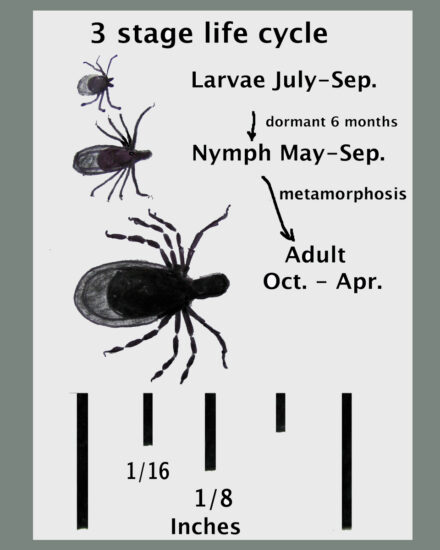Bethesda-Chevy Chase Chapter of IWLA

Tick Awareness
Ticks are common in our region and pose serious health risks because they can transmit diseases like Lyme disease, Rocky Mountain spotted fever, anaplasmosis, babesiosis, and even trigger red meat allergies. Their size varies throughout their three-stage life cycle, and activity levels change with the seasons.
One concerning tick-born illness results in an allergic reaction to red meat and dairy products. It’s called Alpha-gal syndrome (AGS) and can result from the bite of a Lone Star tick. There is no cure for AGS. Lone star ticks appear to carry AGS in all stages of their life cycle. That includes larval ticks, which are nearly invisible to the naked eye. When a tick bites, it can transfer alpha-gal from its saliva into a person’s blood. So you can quickly become infected.
The best protection is avoiding bites. Preventive measures include using permethrin-treated clothing (applied in advance), wearing light-colored clothes, and using repellents like DEET, Picaridin, or oil of eucalyptus. Always check for ticks after being outdoors. You usually don’t feel a tick bite because tick saliva contains an anesthetic that numbs the area. It also contains a strong adhesive, which allows the tick to attach firmly while feeding.
If you find a tick, capture unattached ones with tape. For embedded ticks, use fine tweezers, grasp close to the skin, and pull steadily—avoiding squeezing. Removing ticks within 24 hours is reported to reduce the risk of Lyme disease.
Don’t bring ticks into your home. They can hitch a ride on clothing. Washing clothes won’t reliably kill them, but a hot dryer cycle will.

